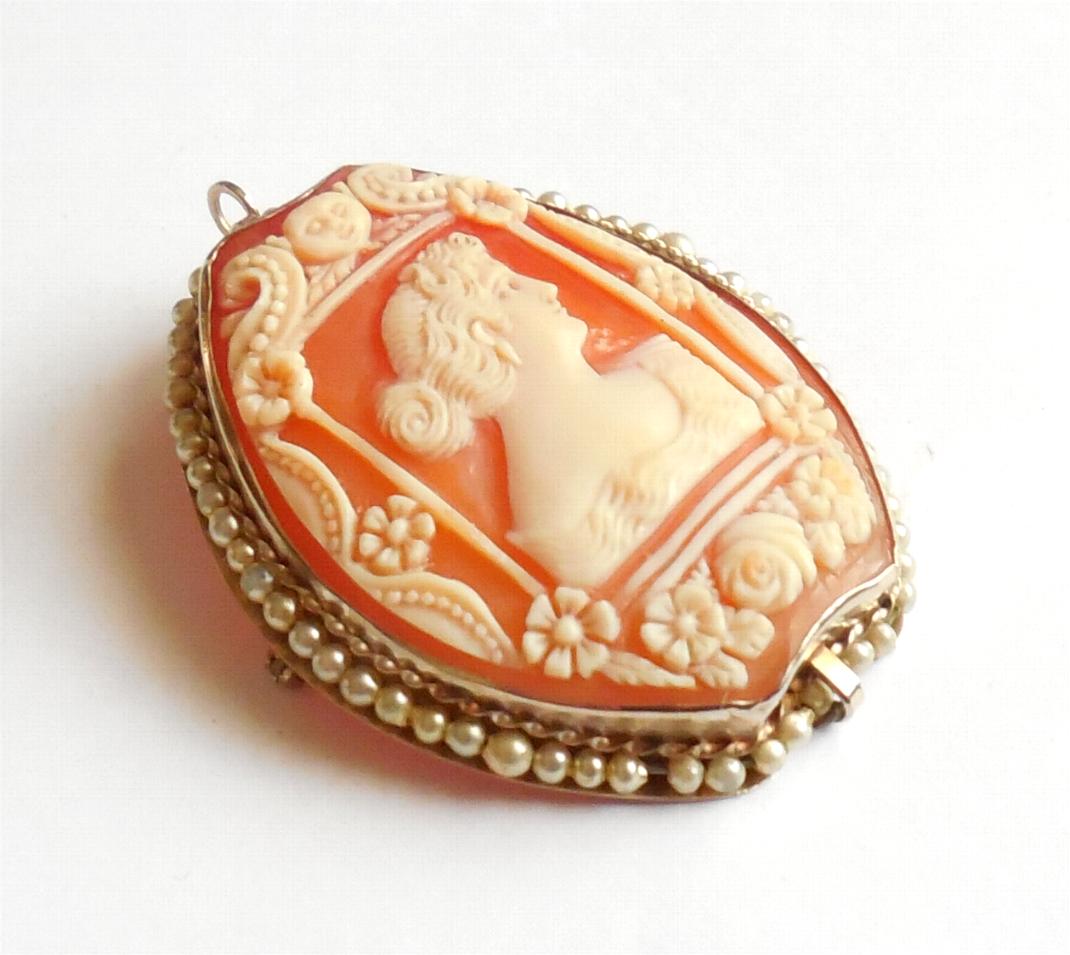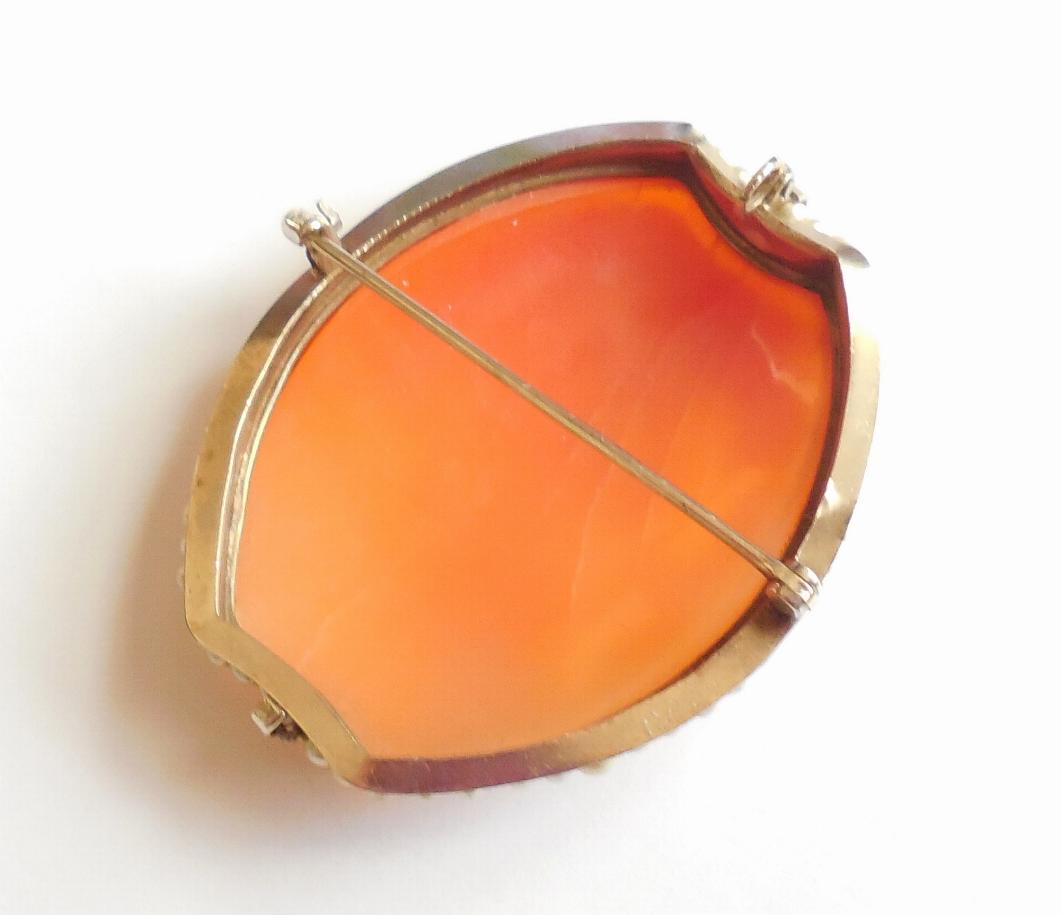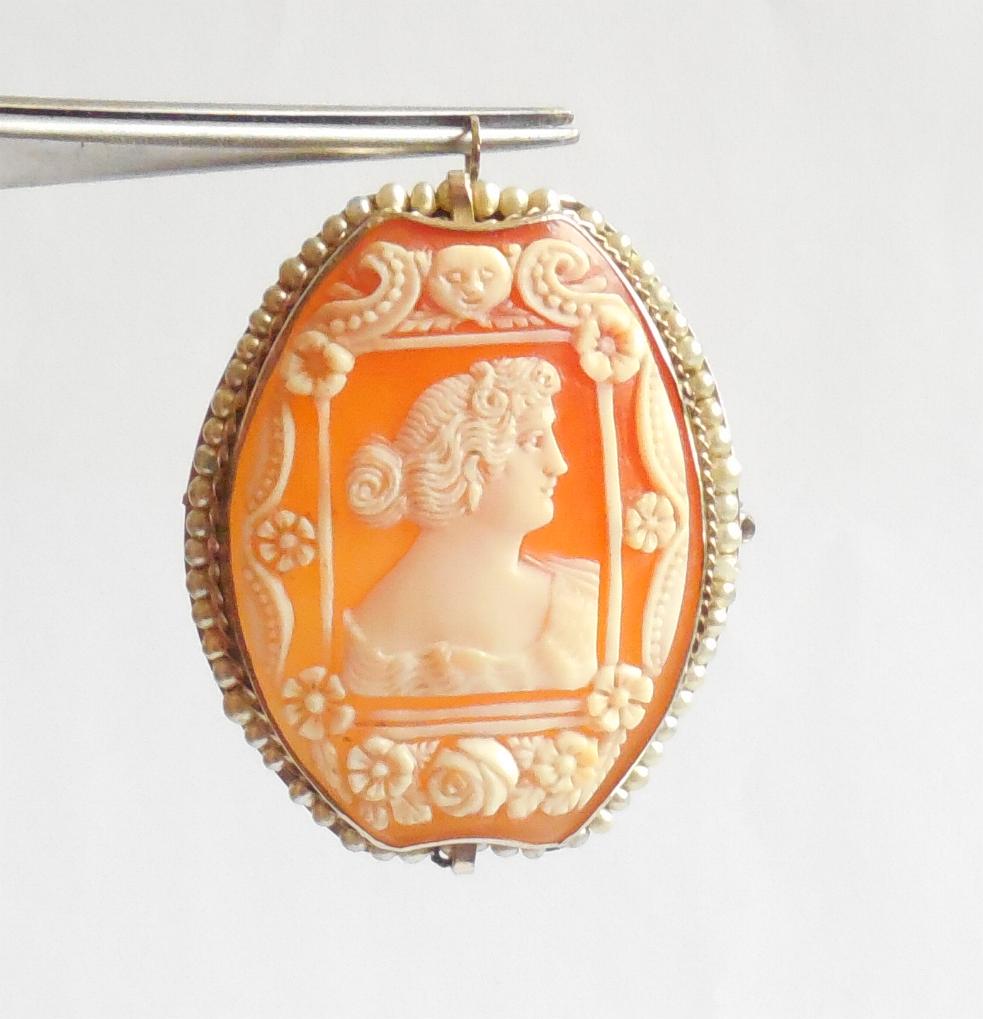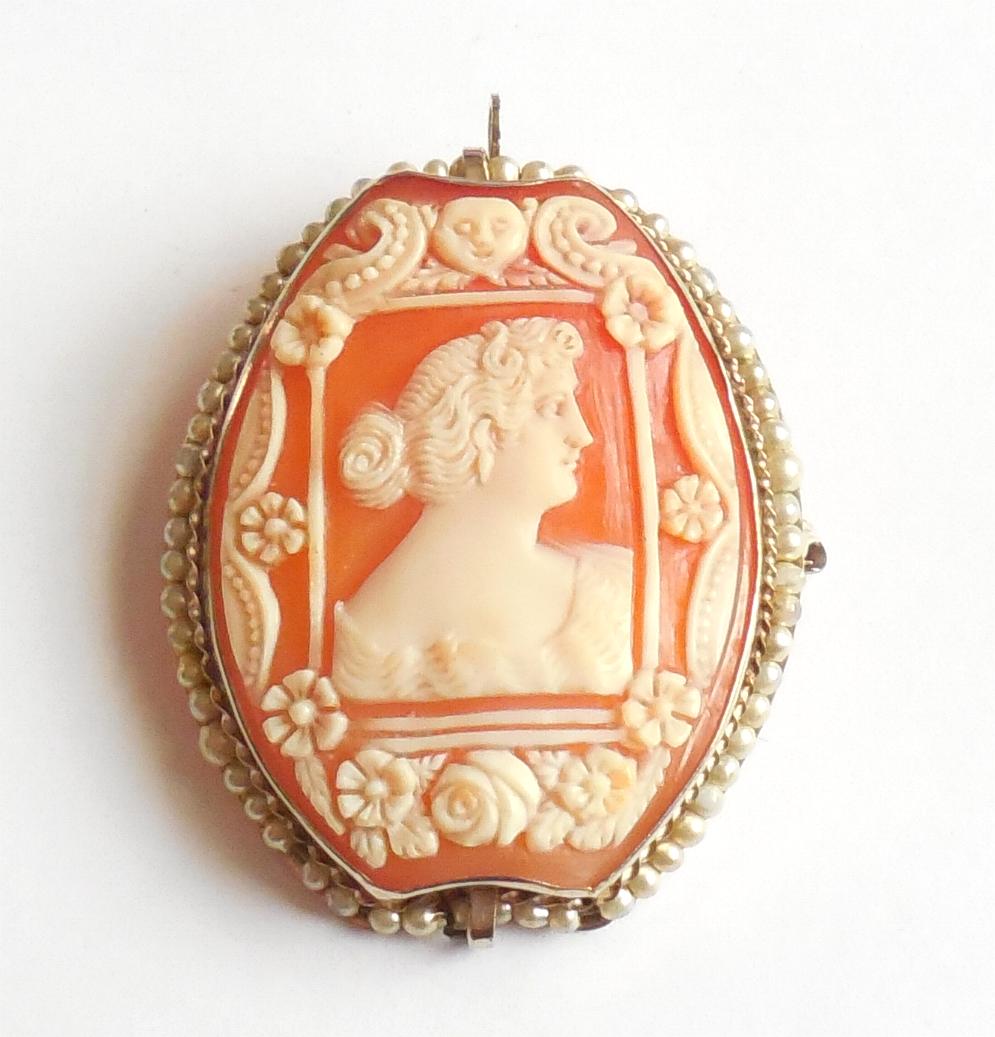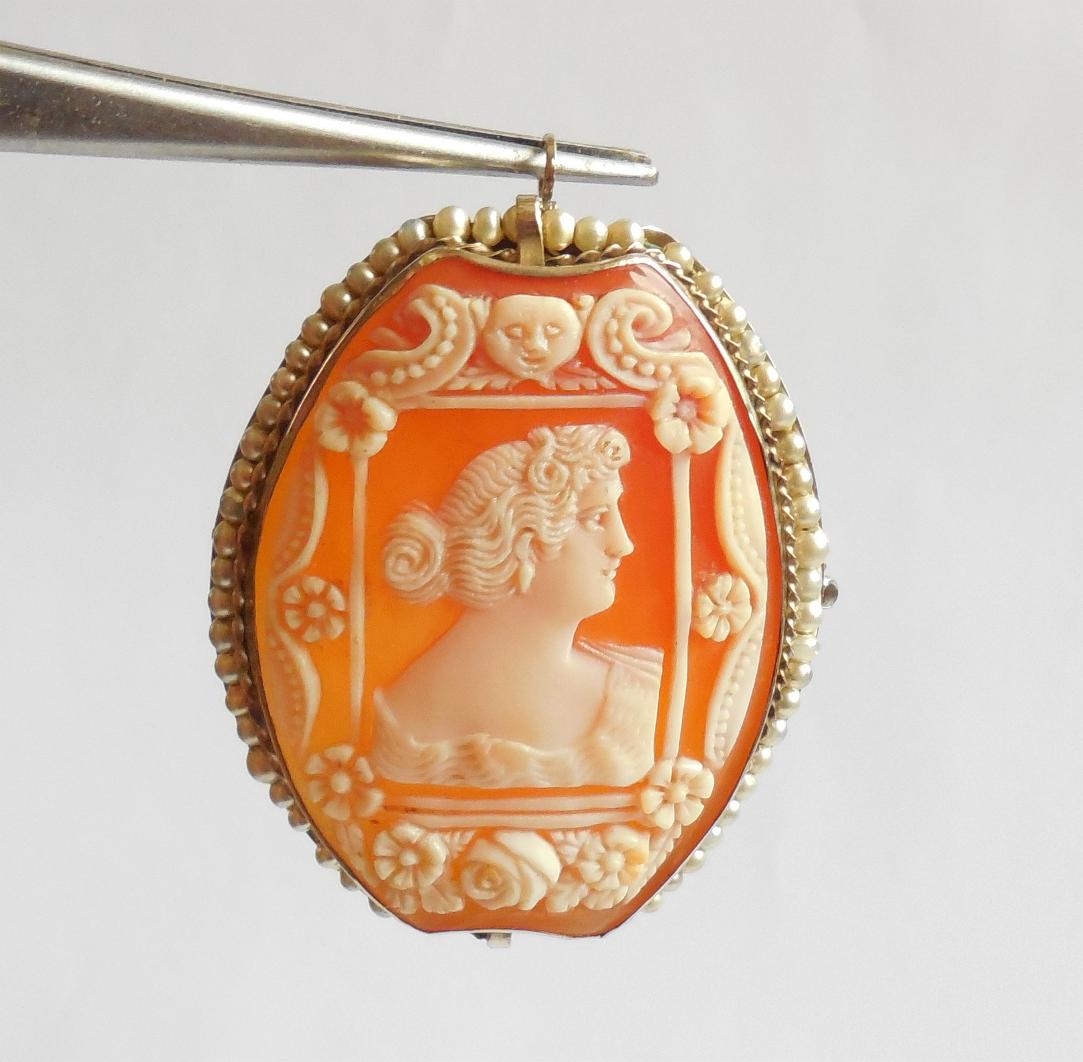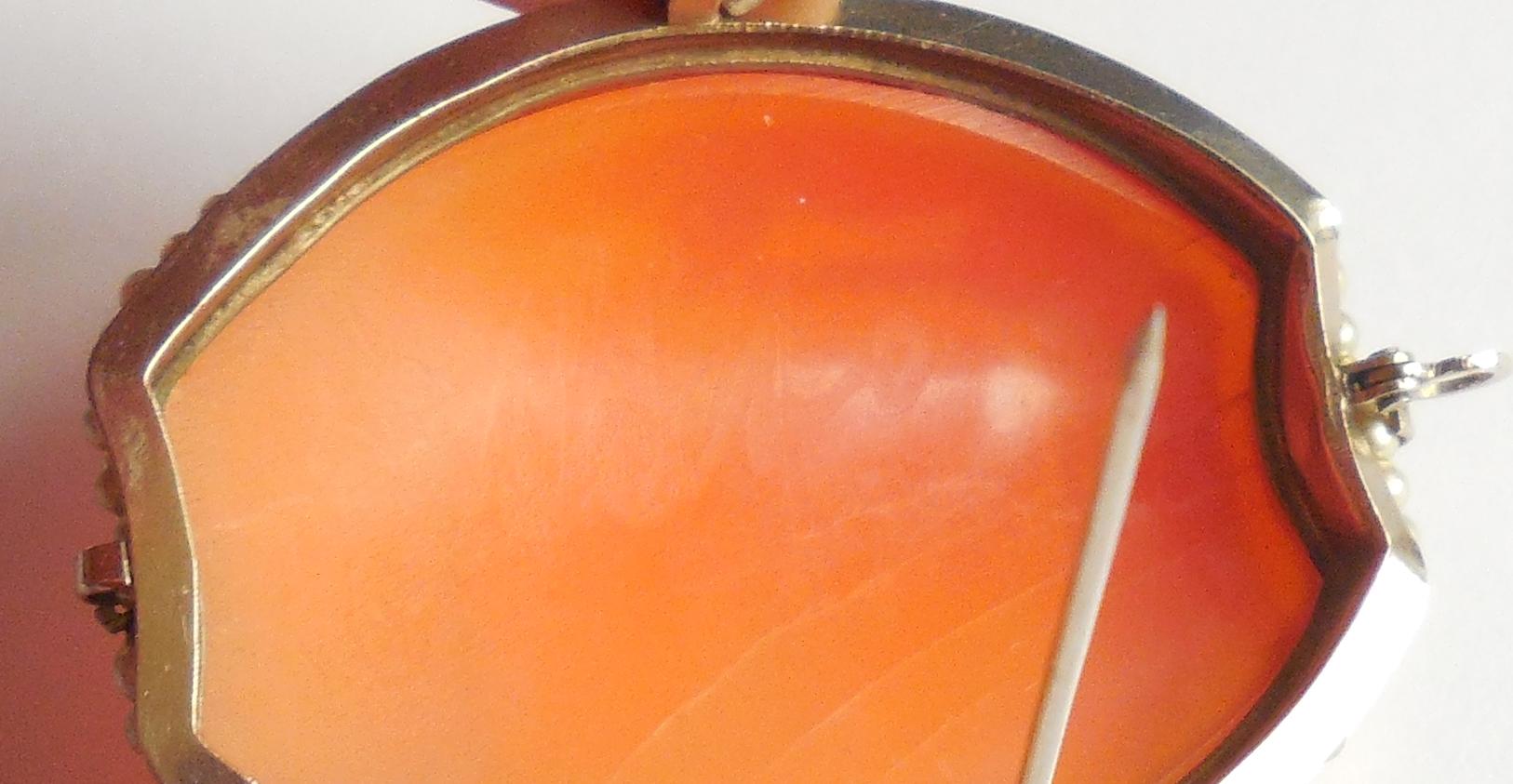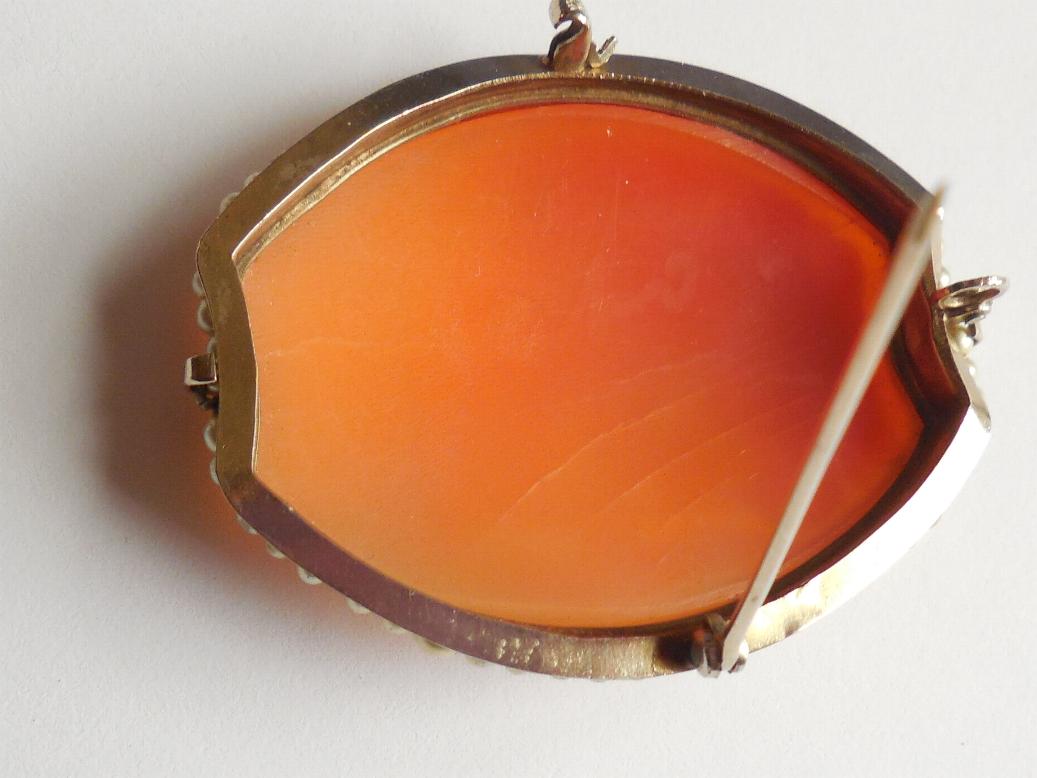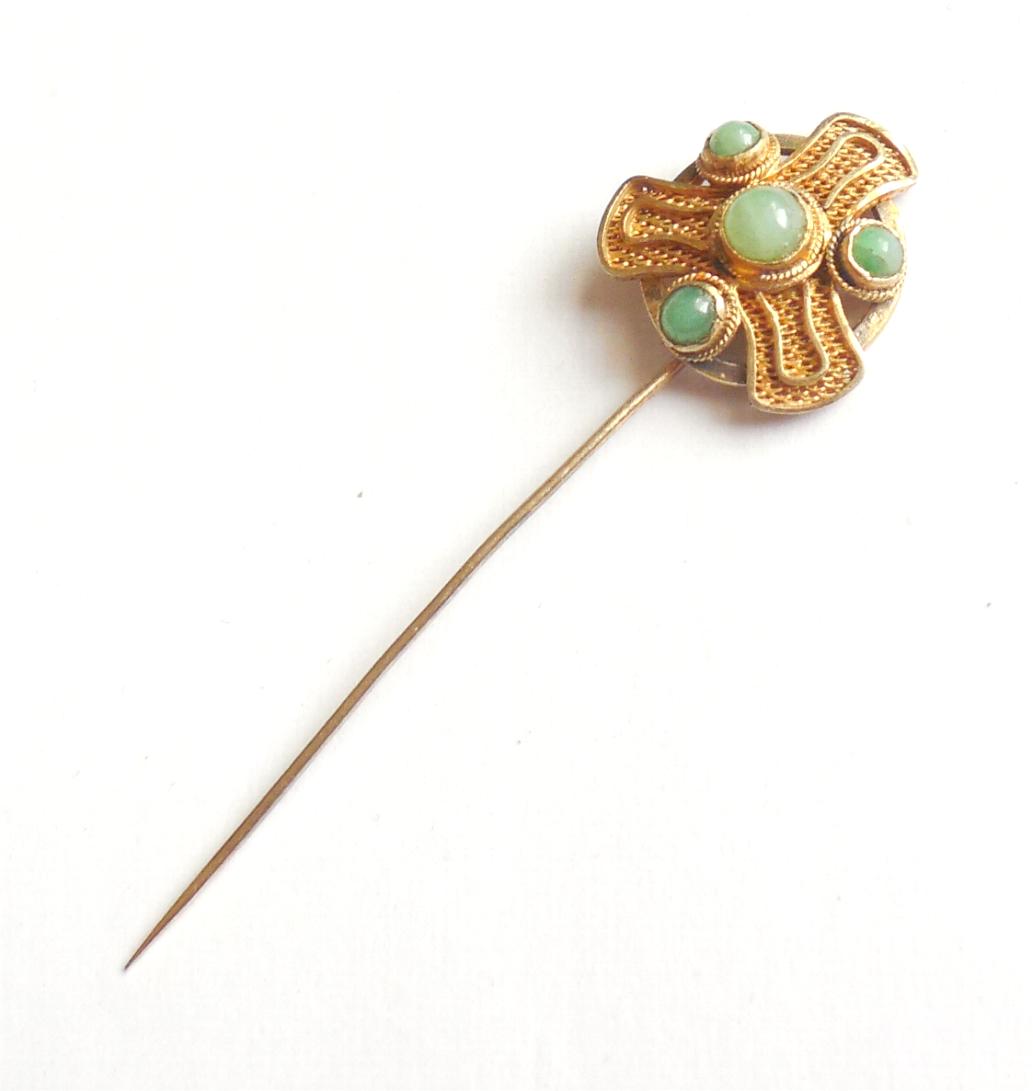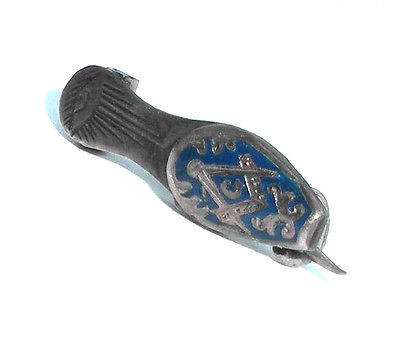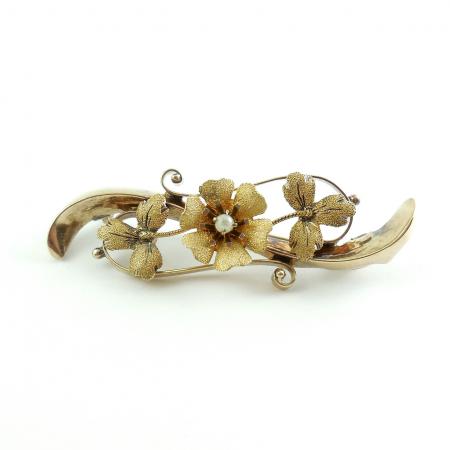Description
Antique Edwardian Signed 14K Gold Pearl Wrapped Cameo Pendant Pin
About Antique Cameo Jewelry: (http://www.collectorsweekly.com/fine-jewelry/cameos)
In fine jewelry, the cameo is defined as an ornament carved in relief from a high-quality material such as stone, shell, coral, Gutta-percha, bog oak, ivory, lava, or mother-of-pearl. In costume jewelry, cameos are generally made from molded plastic or glass.
The most common cameo motif is the portrait. In the past, these bore the likeness of an actual person, usually a celebrity of the day—a ruler, scholar, or philosopher. Early in the 19th century, cameos started to feature an anonymous Roman woman wearing no jewelry. Victorian women on the Grand Tour—a traveling rite of passage for upper-class Europeans—sought out lava cameos carved with the mystery woman’s image when they were in Italy. These affluent Victorians eventually had a big influence on cameos when they demanded a more familiar-looking lady, with a thinner neck, her hair up, and wearing jewelry.
Vintage cameos also incorporated religious figures and scenes, floral motifs, and images from mythology. In particular, ancient Roman motifs have been popular for cameos since they first appeared during the reign of Alexander the Great, when they were made of agate, onyx, and sardonyx.
In the salons of 18th-century Europe, carved gemstones were all the rage with high-society ladies. Cameo makers of the time would take Plaster of Paris molds of these carved gemstones as records of notable cameo collections. At the time, cameos were a sign of wealth and privilege, but glass paste brought cameos to the mainstream. Scottish artisan James Tassie began making molds of esteemed cameo collections to recreate the images as glass-plate cameos that could pass as carved jewels.
Soon, carvers discovered that shell was a soft, durable, and easy-to-carve material, and it made for less-formal looking jewelry. Empress Josephine wore a shell cameo every day, making them a must-have in France, and soon they caught on in England, where shell cameos were favored by Queen Victoria for her own adornment and as gifts.
As the popularity of cameos took off in the 1800s, they became incorporated into daily life. In France, Napoleon brought in carvers from all over Europe to create cameo jewelry for men and women. Since cameos were a symbol of his reign in France, he even commissioned furniture to be embellished with cameos. Later, in Victorian England, cameos were carved onto metal, Wedgwood made them out of Jasparware, and tailors used cameo wooden buttons that featured mythological themes, flowers, and, of course, portraits.
During the 19th century, colored lava excavated at an archaeological dig at Pompeii was used to make highly detailed, three-dimensional carvings. That’s where many of the women who were traveling to Italy for their Grand Tour picked up their lava cameos. More than a perfectly portable souvenir, these lava cameos became status symbols, proving that a woman had indeed traveled abroad.
Late in the century, the “cameo habillé” came into popularity. In these portrait cameos, the mystery woman is portrayed wearing real diamond jewelry. Religious motifs were also popular in the Victorian era, particularly scenes of Rebecca at the Well and the Garden of Eden. Mourning brooches often featured scenes signifying a loved one’s assent to heaven. These memento mori cameos were usually made of Gutta-percha, while other carvers took to ivory and celluloid. These days, Lucite and other plastics have replace that early plastic.
Archaeological digs of the 19th century piqued the Victorians’ interest in mythology. Soon, cameos were made with ancient Roman motifs such as Psyche, the bride of Cupid, with a butterfly wing on her hair or shoulder; Artemis (Diana), the goddess of hunting, with a crescent moon in hers; Demeter (Ceres), goddess of harvest, bearing a stalk of wheat; Dionysus (Bacchus), the god of wine and fertility, or his follower, the Bacchante maiden, with grapes and grape leaves in their hair; and the Three Muses.
After World War II, cameos surged in popularity with the rise of costume jewelry. Now they could be made very inexpensively out of shell, plastic, and glass in various colors. Today, cameo makers choose freely from the designs of the past, particularly those featuring that original anonymous woman and mythological tales.

